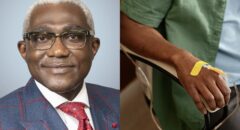Dr. Wayne Harrington, an oral surgeon with a practice in Tulsa, Oklahoma, is being investigated by the state dental board, the state bureau of narcotics and the federal Drug Enforcement Agency for potentially spreading HIV and hepatitis B and C to his patients.
The situation began when one of his patients recently tested positive for hepatitis C and HIV – without having other known risk factors.
Due to the infected patient, the Oklahoma Board of Dentistry conducted a surprise inspection of Harrington’s practice, and allegedly found numerous problems, including regular use of a rusty set of instruments on patients with known infections, and the practice of pouring bleach on wounds until they “turned white.”
Now, the Tulsa Health Department is warning 7,000 patients of a local dentist’s office that they could have contracted HIV, hepatitis B or hepatitis C from poor sterilization practices.
Susan Rogers, executive director of Oklahoma’s Board of Dentistry, called the incident a “perfect storm.” On top of his many violations in sanitary practice, the dentist was a Medicaid provider, which means he had a high proportion of patients with HIV or hepatitis, she said.
Harrington and his staff told investigators that he treated a “high population of known infectious disease carrier patients,” according to a complaint filed by the Oklahoma Board of Dentistry.
He allegedly allowed unlicensed dental assistants to administer medication, according to the complaint. These assistants were left to decide which medications to administer, and how much was appropriate.
Drug cabinets were unlocked and unsupervised during the day, and Harrington did not keep an inventory log of drugs, some of which were controlled substances. One drug vial expired in 1993.
“During the inspections, Dr. Harrington referred to his staff regarding all sterilization and drug procedures in his office,” the complaint read. “He advised, ‘They take care of that. I don’t.'”
Harrington allegedly re-used needles, contaminating drugs with potentially harmful bacteria and trace amounts of other drugs, according to the complaint. Although patient-specific drug records indicated that they were using morphine in 2012, no morphine had been ordered since 2009.
The instruments for infected patients was given an extra dip in bleach in addition to normal cleaning methods, but they had red-brown rust spots, indicating that they were “porous and cannot be properly sterilized,” according to the complaint.
The Tulsa Health Department said Harrington’s patients will receive letters by mail notifying them of the risk and steps to obtain free-of-charge testing.
While 7,000 patients may have been exposed, Joseph Perz, an epidemiologist with the U.S. Centers for Disease Control and Prevention, said it’s “extremely rare” to see dental transmission of HIV and hepatitis B or C. In July 2012, 8,000 Coloradans were notified that their dentist had reused needles, potentially exposing them to the blood-borne viruses. But not a single case was identified, according to the CDC.
Dental transmission is not impossible, however. Perz cited a dental fair three years ago in which hepatitis B was transmitted between patients.
The Tulsa Health Department has set up a hotline at (918) 595-4500 for people with questions.








